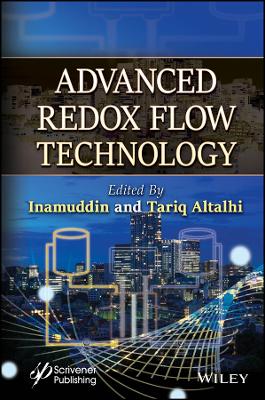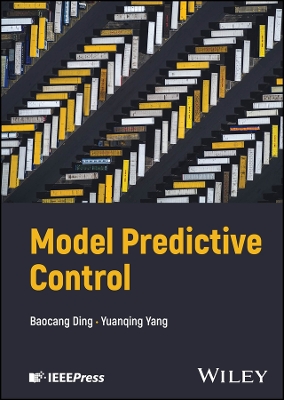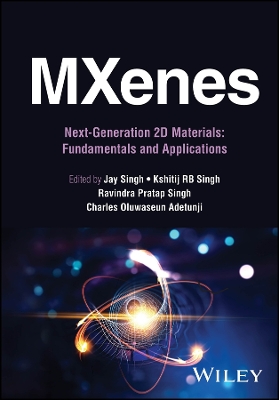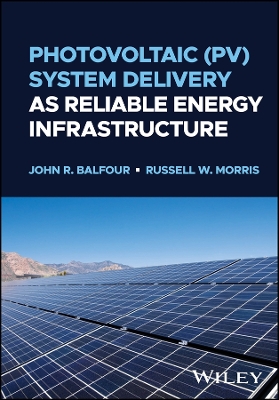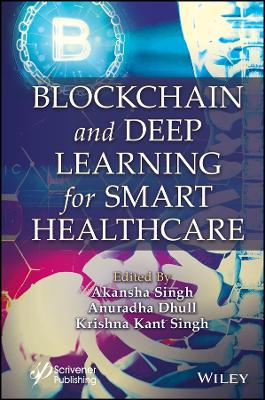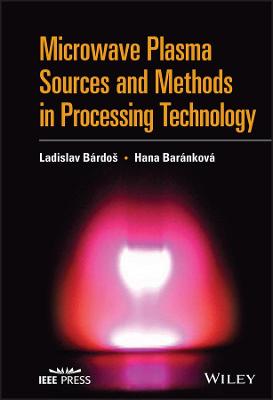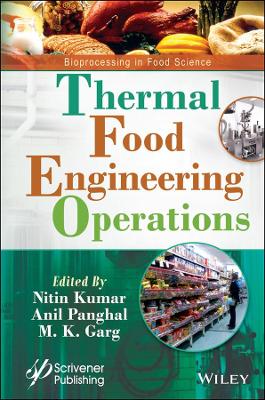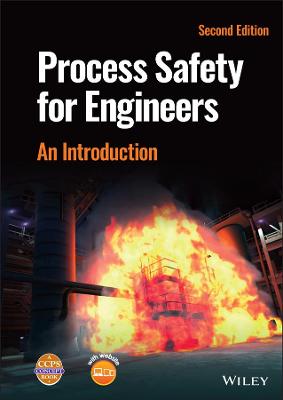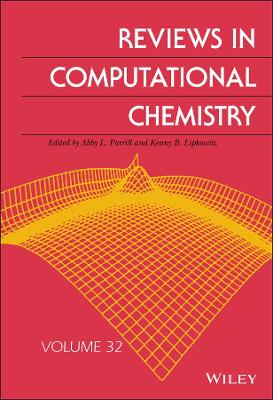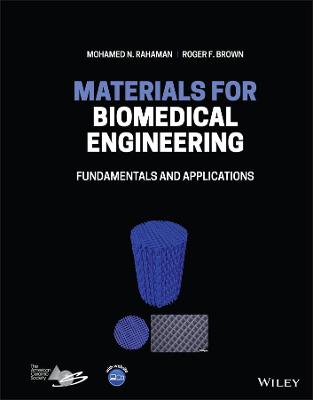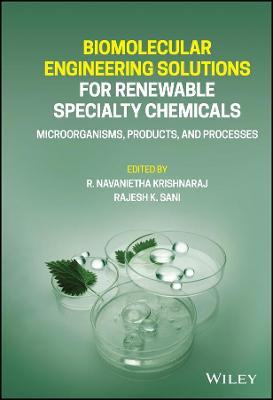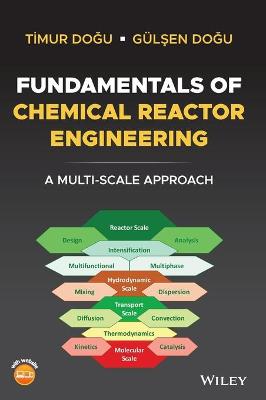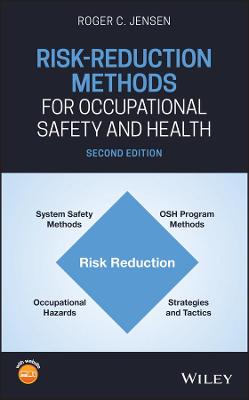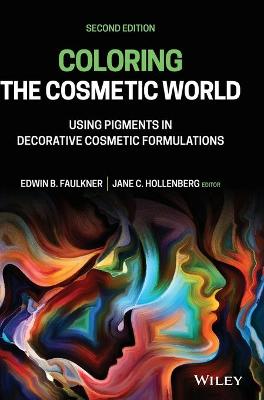Process Systems Engineering for Biofuels Development
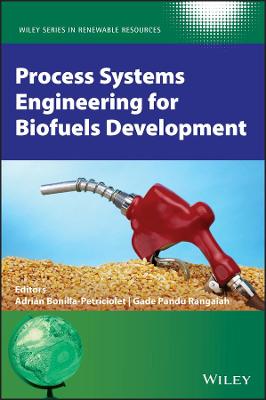 -15%
portes grátis
-15%
portes grátis
Process Systems Engineering for Biofuels Development
Rangaiah, Gade Pandu; Bonilla-Petriciolet, Adrian; Stevens, Christian V.
John Wiley & Sons Inc
08/2020
384
Dura
Inglês
9781119580270
15 a 20 dias
820
Series Preface xv
Preface xvii
1 Introduction 1
Adrian Bonilla-Petriciolet and Gade Pandu Rangaiah
1.1 Importance of Biofuels and Overview of their Production 1
1.2 Significance of Process Systems Engineering for Biofuels Production 3
1.2.1 Modeling of Physicochemical Properties of Thermodynamic Systems Related to Biofuels 4
1.2.2 Intensification of the Biomass Transformation Routes for the Production of Biofuels 5
1.2.3 Computer-Aided Methodologies for Process Modeling, Design, Optimization, and Control Including Supply Chain and Life Cycle Analyses 7
1.3 Overview of this Book 9
References 11
2 Waste Biomass Suitable as Feedstock for Biofuels Production 15
Maria Papadaki
2.1 Introduction 15
2.1.1 The Need for Biofuels 15
2.1.2 Problem Definition 17
2.1.3 The Biomass Pool 18
2.2 Kinds of Feedstock 20
2.2.1 Spent Coffee Grounds 21
2.2.2 Lignocellulose Biomass 22
2.2.3 Palm, Olive, Coconut, Avocado, and Argan Oil Production Residues 25
2.2.4 Citrus 33
2.2.5 Grape Marc 36
2.2.6 Waste Oil and Cooking Oil 37
2.2.7 Additional Sources 38
2.3 Conclusions 40
Acknowledgment 40
References 40
3 Multiscale Analysis for the Exploitation of Bioresources: From Reactor Design to Supply Chain Analysis 49
Antonio Sanchez, Borja Hernandez, and Mariano Martin
3.1 Introduction 49
3.2 Unit Level 50
3.2.1 Short Cut Methods 50
3.2.2 Mechanistic Models 51
3.2.3 Rules of Thumb 56
3.2.4 Dimensionless Analysis 56
3.2.5 Surrogate Models 56
3.2.6 Experimental Correlations 59
3.3 Process Synthesis 60
3.3.1 Heuristic Based 60
3.3.2 Supestructure Optimization 61
3.3.3 Environmental Impact Metrics 65
3.3.4 Safety Considerations 66
3.4 The Product Design Problem 66
3.4.1 Product Design: Engineering Biomass 66
3.4.2 Blending Problems 68
3.5 Supply Chain Level 68
3.5.1 Introduction 68
3.5.2 Modeling Issues 70
3.6 Multiscale Links and Considerations 71
Acknowledgment 74
Nomenclature 74
References 75
4 Challenges in the Modeling of Thermodynamic Properties and Phase Equilibrium Calculations for Biofuels Process Design 85
Roumiana P. Stateva and Georgi St. Cholakov
4.1 Introduction 85
4.2 Thermodynamic Modeling Framework: Elements, Structure, and Organization 86
4.3 Thermodynamics of Biofuel Systems 88
4.3.1 Phase Equilibria 88
4.3.2 Thermodynamic Models 90
4.4 Sources of Data for Biofuels Process Design 98
4.5 Methods for Predicting Data for Biofuels Process Design 102
4.5.1 Group Contribution Methods for Biofuels Process Design 103
4.5.2 Quantitative Structure-Property Relationships for Biofuels Process Design 105
4.6 Challenges for the Biofuels Process Design Methods 109
4.7 Influence of Uncertainties in Thermophysical Properties of Pure Compounds on the Phase Behavior of Biofuel Systems 112
4.8 Conclusions 114
Acknowledgment 114
Exercises 114
References 115
5 Up-grading ofWaste Oil: A Key Step in the Future of Biofuel Production 121
Luigi di Bitonto and Carlo Pastore
5.1 Introduction 121
5.2 Physicochemical Pretreatments of Waste Oils: Removal of Contaminants 124
5.3 Direct Treatment and Conversion of FFAs into Methyl Esters 125
5.3.1 Homogeneous Catalysis: Bronsted and Lewis Acids 125
5.3.2 Heterogeneous Catalysis 127
5.3.3 Enzymatic Biodiesel Production 128
5.3.4 ILs Biodiesel Production 130
5.3.5 Use of Metal Hydrated Salts 133
5.4 Future Trends of the Pretreatments of Waste Oils 139
5.5 Conclusions 140
Acknowledgment 141
Abbreviations 141
References 142
6 Production of Biojet Fuel from Waste Raw Materials: A Review 149
Ana Laura Moreno-Gomez, Claudia Gutierrez-Antonio, Fernando Israel Gomez-Castro, and Salvador Hernandez
6.1 Introduction 149
6.2 Waste Triglyceride Feedstock 150
6.3 Waste Lignocellulosic Feedstock 159
6.4 Waste Sugar and Starchy Feedstock 164
6.5 Main Challenges and Future Trends 165
6.6 Conclusions 167
Acknowledgments 167
References 167
7 Computer-Aided Design for Genetic Modulation to Improve Biofuel Production 173
Feng-Sheng Wang and Wu-Hsiung Wu
7.1 Introduction 173
7.2 Method 175
7.2.1 Flux Balance Analysis 175
7.2.2 Flux Variability Analysis 176
7.2.3 Minimization of Metabolic Adjustment 176
7.2.4 Regulatory On-Off Minimization 177
7.2.5 Optimal Strain Design Problem 177
7.3 Computer-Aided Strain Design Tool 179
7.4 Examples 181
7.4.1 E. coli Core Model 181
7.4.2 Genome-Scale Metabolic Model of E. coli iAF1260 183
7.5 Conclusions 185
Appendix 7.A: The SBP Program 187
References 187
8 Implementation of Biodiesel Production Process Using Enzyme-Catalyzed Routes 191
Thalles Allan Andrade, Massimiliano Errico, and Knud Villy Christensen
8.1 Introduction 191
8.2 Biodiesel Production Routes: Chemical versus Enzymatic Catalysts 194
8.2.1 Chemical Catalysts 195
8.2.2 Enzymatic Catalysts 196
8.3 Optimal Reaction Conditions and Kinetic Modeling 198
8.3.1 Evaluation of the Reaction Conditions 199
8.3.2 Kinetic Modeling 201
8.4 Process Simulation and Economic Evaluation 205
8.5 Reuse of Enzyme for the Transesterification Reaction 210
8.5.1 Recovery of Eversa Transform by Means of Centrifugation 210
8.5.2 Recovery of Eversa Transform by Means of Ceramic Membranes 211
8.6 Environmental Impact and Final Remarks 215
Acknowledgments 217
Nomenclature 217
References 217
9 Process Analysis of Biodiesel Production - Kinetic Modeling, Simulation, and Process Design 221
Bruna Ricetti Margarida, Wanderson Rogerio Giacomin-Junior, Luiz Fernando de Lima Luz Junior, Fernando Augusto Pedersen Voll, and Marcos Lucio Corazza
9.1 Introduction 221
9.1.1 Homogeneous-Based Reactions 222
9.1.2 Heterogeneous-Based Reactions 223
9.1.3 Enzyme-Catalyzed Reactions 224
9.1.4 Supercritical Route Reactions 224
9.1.5 Methanol or Ethanol for Biodiesel Synthesis 224
9.2 Getting Started with Aspen Plus V10 224
9.2.1 Pure Compounds 225
9.2.2 Mixture Parameters 229
9.3 Kinetic Study 232
9.3.1 Esterification Reaction 232
9.3.2 Experimental Reaction Data Regression 234
9.3.3 Transesterification Reaction 236
9.3.4 Supercritical Route 238
9.4 Process Design 239
9.4.1 Esterification Reaction 239
9.4.2 Methanol Recycling 243
9.4.3 Transesterification Reaction 244
9.4.4 Biodiesel Purification 245
9.4.5 Additional Resources 248
9.5 Energy and Economic Analysis 252
9.6 Concluding Remarks 254
Acknowledgment 255
Exercises 255
References 256
10 Process Development, Design and Analysis of Microalgal Biodiesel Production Aided by Microwave and Ultrasonication 259
Dipesh S. Patle, Savyasachi Shrikhande, and Gade Pandu Rangaiah
10.1 Introduction 259
10.2 Process Development and Modeling 262
10.3 Sizing and Cost Analysis 272
10.4 Comparison with the WCO-Based Process of the Same Capacity 277
10.4.1 Biodiesel Process Using WCO as Raw Material 277
10.4.2 Comparative Analysis 277
10.5 Comparison with the Microalgae-Based Processes 280
10.6 Conclusions 280
Acknowledgment 281
Appendix 10.A 281
Exercises 282
References 282
11 Thermochemical Processes for the Transformation of Biomass into Biofuels 285
Carlos J. Duran-Valle
11.1 Introduction 285
11.2 Biomass and Biofuels 288
11.3 Combustion 289
11.4 Gasification 290
11.4.1 Fixed Bed Gasification 291
11.4.2 Fluidized Bed Gasification 292
11.4.3 Dual Fluidized Bed Gasification 292
11.4.4 Hydrothermal Gasification 293
11.4.5 Supercritical Water Gasification 294
11.4.6 Plasma Gasification 294
11.4.7 Catalyzed Gasification 295
11.4.8 Fischer-Tropsch Synthesis 295
11.5 Liquefaction 296
11.6 Pyrolysis 296
11.6.1 Slow Pyrolysis 297
11.6.2 Fast Pyrolysis 297
11.6.3 Flash Pyrolysis 297
11.6.4 Catalytic Biomass Pyrolysis 303
11.6.5 Microwave Heating 304
11.6.6 Product Separation 304
11.7 Carbonization 305
11.8 Conclusions 308
Acknowledgments 309
References 309
12 Intensified Purification Alternative for Methyl Ethyl Ketone Production: Economic, Environmental, Safety and Control Issues 311
Eduardo Sanchez-Ramirez, Juan Jose Quiroz-Ramirez, and Juan Gabriel Segovia-Hernandez
12.1 Introduction 311
12.2 Problem Statement and Case Study 316
12.3 Evaluation Indexes and Optimization Problem 317
12.3.1 Total Annual Cost Calculation 319
12.3.2 Environmental Index Calculation 319
12.3.3 Individual Risk Index 320
12.3.4 Controllability Index Calculation 322
12.3.5 Multi-Objective Optimization Problem 323
12.4 Global Optimization Methodology 324
12.5 Results 325
12.6 Conclusions 335
Acknowledgments 335
Notation 335
References 336
13 Present and Future of Biofuels 341
Juan Gabriel Segovia-Hernandez, Cesar Ramirez-Marquez, and Eduardo Sanchez-Ramirez
13.1 Introduction 341
13.2 Some Representative Biofuels 344
13.2.1 Bioethanol 344
13.2.2 Biodiesel 347
13.2.3 Biobutanol 348
13.2.4 Biojet Fuel 349
13.2.5 Biogas 351
13.3 Perspectives and Future of Biofuels 352
References 354
Index 357
Series Preface xv
Preface xvii
1 Introduction 1
Adrian Bonilla-Petriciolet and Gade Pandu Rangaiah
1.1 Importance of Biofuels and Overview of their Production 1
1.2 Significance of Process Systems Engineering for Biofuels Production 3
1.2.1 Modeling of Physicochemical Properties of Thermodynamic Systems Related to Biofuels 4
1.2.2 Intensification of the Biomass Transformation Routes for the Production of Biofuels 5
1.2.3 Computer-Aided Methodologies for Process Modeling, Design, Optimization, and Control Including Supply Chain and Life Cycle Analyses 7
1.3 Overview of this Book 9
References 11
2 Waste Biomass Suitable as Feedstock for Biofuels Production 15
Maria Papadaki
2.1 Introduction 15
2.1.1 The Need for Biofuels 15
2.1.2 Problem Definition 17
2.1.3 The Biomass Pool 18
2.2 Kinds of Feedstock 20
2.2.1 Spent Coffee Grounds 21
2.2.2 Lignocellulose Biomass 22
2.2.3 Palm, Olive, Coconut, Avocado, and Argan Oil Production Residues 25
2.2.4 Citrus 33
2.2.5 Grape Marc 36
2.2.6 Waste Oil and Cooking Oil 37
2.2.7 Additional Sources 38
2.3 Conclusions 40
Acknowledgment 40
References 40
3 Multiscale Analysis for the Exploitation of Bioresources: From Reactor Design to Supply Chain Analysis 49
Antonio Sanchez, Borja Hernandez, and Mariano Martin
3.1 Introduction 49
3.2 Unit Level 50
3.2.1 Short Cut Methods 50
3.2.2 Mechanistic Models 51
3.2.3 Rules of Thumb 56
3.2.4 Dimensionless Analysis 56
3.2.5 Surrogate Models 56
3.2.6 Experimental Correlations 59
3.3 Process Synthesis 60
3.3.1 Heuristic Based 60
3.3.2 Supestructure Optimization 61
3.3.3 Environmental Impact Metrics 65
3.3.4 Safety Considerations 66
3.4 The Product Design Problem 66
3.4.1 Product Design: Engineering Biomass 66
3.4.2 Blending Problems 68
3.5 Supply Chain Level 68
3.5.1 Introduction 68
3.5.2 Modeling Issues 70
3.6 Multiscale Links and Considerations 71
Acknowledgment 74
Nomenclature 74
References 75
4 Challenges in the Modeling of Thermodynamic Properties and Phase Equilibrium Calculations for Biofuels Process Design 85
Roumiana P. Stateva and Georgi St. Cholakov
4.1 Introduction 85
4.2 Thermodynamic Modeling Framework: Elements, Structure, and Organization 86
4.3 Thermodynamics of Biofuel Systems 88
4.3.1 Phase Equilibria 88
4.3.2 Thermodynamic Models 90
4.4 Sources of Data for Biofuels Process Design 98
4.5 Methods for Predicting Data for Biofuels Process Design 102
4.5.1 Group Contribution Methods for Biofuels Process Design 103
4.5.2 Quantitative Structure-Property Relationships for Biofuels Process Design 105
4.6 Challenges for the Biofuels Process Design Methods 109
4.7 Influence of Uncertainties in Thermophysical Properties of Pure Compounds on the Phase Behavior of Biofuel Systems 112
4.8 Conclusions 114
Acknowledgment 114
Exercises 114
References 115
5 Up-grading ofWaste Oil: A Key Step in the Future of Biofuel Production 121
Luigi di Bitonto and Carlo Pastore
5.1 Introduction 121
5.2 Physicochemical Pretreatments of Waste Oils: Removal of Contaminants 124
5.3 Direct Treatment and Conversion of FFAs into Methyl Esters 125
5.3.1 Homogeneous Catalysis: Bronsted and Lewis Acids 125
5.3.2 Heterogeneous Catalysis 127
5.3.3 Enzymatic Biodiesel Production 128
5.3.4 ILs Biodiesel Production 130
5.3.5 Use of Metal Hydrated Salts 133
5.4 Future Trends of the Pretreatments of Waste Oils 139
5.5 Conclusions 140
Acknowledgment 141
Abbreviations 141
References 142
6 Production of Biojet Fuel from Waste Raw Materials: A Review 149
Ana Laura Moreno-Gomez, Claudia Gutierrez-Antonio, Fernando Israel Gomez-Castro, and Salvador Hernandez
6.1 Introduction 149
6.2 Waste Triglyceride Feedstock 150
6.3 Waste Lignocellulosic Feedstock 159
6.4 Waste Sugar and Starchy Feedstock 164
6.5 Main Challenges and Future Trends 165
6.6 Conclusions 167
Acknowledgments 167
References 167
7 Computer-Aided Design for Genetic Modulation to Improve Biofuel Production 173
Feng-Sheng Wang and Wu-Hsiung Wu
7.1 Introduction 173
7.2 Method 175
7.2.1 Flux Balance Analysis 175
7.2.2 Flux Variability Analysis 176
7.2.3 Minimization of Metabolic Adjustment 176
7.2.4 Regulatory On-Off Minimization 177
7.2.5 Optimal Strain Design Problem 177
7.3 Computer-Aided Strain Design Tool 179
7.4 Examples 181
7.4.1 E. coli Core Model 181
7.4.2 Genome-Scale Metabolic Model of E. coli iAF1260 183
7.5 Conclusions 185
Appendix 7.A: The SBP Program 187
References 187
8 Implementation of Biodiesel Production Process Using Enzyme-Catalyzed Routes 191
Thalles Allan Andrade, Massimiliano Errico, and Knud Villy Christensen
8.1 Introduction 191
8.2 Biodiesel Production Routes: Chemical versus Enzymatic Catalysts 194
8.2.1 Chemical Catalysts 195
8.2.2 Enzymatic Catalysts 196
8.3 Optimal Reaction Conditions and Kinetic Modeling 198
8.3.1 Evaluation of the Reaction Conditions 199
8.3.2 Kinetic Modeling 201
8.4 Process Simulation and Economic Evaluation 205
8.5 Reuse of Enzyme for the Transesterification Reaction 210
8.5.1 Recovery of Eversa Transform by Means of Centrifugation 210
8.5.2 Recovery of Eversa Transform by Means of Ceramic Membranes 211
8.6 Environmental Impact and Final Remarks 215
Acknowledgments 217
Nomenclature 217
References 217
9 Process Analysis of Biodiesel Production - Kinetic Modeling, Simulation, and Process Design 221
Bruna Ricetti Margarida, Wanderson Rogerio Giacomin-Junior, Luiz Fernando de Lima Luz Junior, Fernando Augusto Pedersen Voll, and Marcos Lucio Corazza
9.1 Introduction 221
9.1.1 Homogeneous-Based Reactions 222
9.1.2 Heterogeneous-Based Reactions 223
9.1.3 Enzyme-Catalyzed Reactions 224
9.1.4 Supercritical Route Reactions 224
9.1.5 Methanol or Ethanol for Biodiesel Synthesis 224
9.2 Getting Started with Aspen Plus V10 224
9.2.1 Pure Compounds 225
9.2.2 Mixture Parameters 229
9.3 Kinetic Study 232
9.3.1 Esterification Reaction 232
9.3.2 Experimental Reaction Data Regression 234
9.3.3 Transesterification Reaction 236
9.3.4 Supercritical Route 238
9.4 Process Design 239
9.4.1 Esterification Reaction 239
9.4.2 Methanol Recycling 243
9.4.3 Transesterification Reaction 244
9.4.4 Biodiesel Purification 245
9.4.5 Additional Resources 248
9.5 Energy and Economic Analysis 252
9.6 Concluding Remarks 254
Acknowledgment 255
Exercises 255
References 256
10 Process Development, Design and Analysis of Microalgal Biodiesel Production Aided by Microwave and Ultrasonication 259
Dipesh S. Patle, Savyasachi Shrikhande, and Gade Pandu Rangaiah
10.1 Introduction 259
10.2 Process Development and Modeling 262
10.3 Sizing and Cost Analysis 272
10.4 Comparison with the WCO-Based Process of the Same Capacity 277
10.4.1 Biodiesel Process Using WCO as Raw Material 277
10.4.2 Comparative Analysis 277
10.5 Comparison with the Microalgae-Based Processes 280
10.6 Conclusions 280
Acknowledgment 281
Appendix 10.A 281
Exercises 282
References 282
11 Thermochemical Processes for the Transformation of Biomass into Biofuels 285
Carlos J. Duran-Valle
11.1 Introduction 285
11.2 Biomass and Biofuels 288
11.3 Combustion 289
11.4 Gasification 290
11.4.1 Fixed Bed Gasification 291
11.4.2 Fluidized Bed Gasification 292
11.4.3 Dual Fluidized Bed Gasification 292
11.4.4 Hydrothermal Gasification 293
11.4.5 Supercritical Water Gasification 294
11.4.6 Plasma Gasification 294
11.4.7 Catalyzed Gasification 295
11.4.8 Fischer-Tropsch Synthesis 295
11.5 Liquefaction 296
11.6 Pyrolysis 296
11.6.1 Slow Pyrolysis 297
11.6.2 Fast Pyrolysis 297
11.6.3 Flash Pyrolysis 297
11.6.4 Catalytic Biomass Pyrolysis 303
11.6.5 Microwave Heating 304
11.6.6 Product Separation 304
11.7 Carbonization 305
11.8 Conclusions 308
Acknowledgments 309
References 309
12 Intensified Purification Alternative for Methyl Ethyl Ketone Production: Economic, Environmental, Safety and Control Issues 311
Eduardo Sanchez-Ramirez, Juan Jose Quiroz-Ramirez, and Juan Gabriel Segovia-Hernandez
12.1 Introduction 311
12.2 Problem Statement and Case Study 316
12.3 Evaluation Indexes and Optimization Problem 317
12.3.1 Total Annual Cost Calculation 319
12.3.2 Environmental Index Calculation 319
12.3.3 Individual Risk Index 320
12.3.4 Controllability Index Calculation 322
12.3.5 Multi-Objective Optimization Problem 323
12.4 Global Optimization Methodology 324
12.5 Results 325
12.6 Conclusions 335
Acknowledgments 335
Notation 335
References 336
13 Present and Future of Biofuels 341
Juan Gabriel Segovia-Hernandez, Cesar Ramirez-Marquez, and Eduardo Sanchez-Ramirez
13.1 Introduction 341
13.2 Some Representative Biofuels 344
13.2.1 Bioethanol 344
13.2.2 Biodiesel 347
13.2.3 Biobutanol 348
13.2.4 Biojet Fuel 349
13.2.5 Biogas 351
13.3 Perspectives and Future of Biofuels 352
References 354
Index 357

